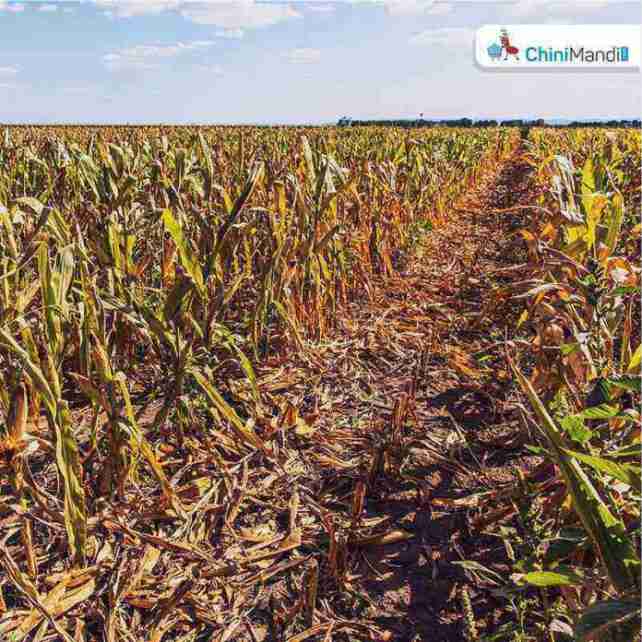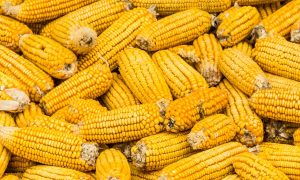Effects of drought and crop failures starting to bite across southern Africa

Southern Africa faced a severe drought this summer, exacerbated by El Niño, leading to substantial maize crop failures in Zambia and Zimbabwe. Zambia lost half of its staple maize harvest and will need to import 500,000 tonnes from Uganda. Zimbabwe’s maize production dropped by 60%, necessitating an estimated 1 million tonnes of imports for 2024/25. South Africa, though impacted, will still export 1.85 million tonnes of maize despite a 19% decline in harvest.
We had a tough summer season in southern Africa, with El Niño-induced drought that led to significant crop failures in the region.
Zambia and Zimbabwe, among others, lost roughly half of the staple maize harvest. These countries must now rely on imports of maize to stabilise the domestic supplies for the year. We will likely remain in these challenging conditions until May 2025, when the new season harvest gets into the market.
The impact of the poor harvest is starting to show at household levels. For example, an article in Business Day Africa on 20 August says: “Elisa Magosi, the SADC executive secretary, has called for urgent humanitarian assistance, reporting that 68 million people across the region are now at risk of hunger.
“The crisis is particularly acute in Malawi, Zambia, and Zimbabwe, which have traditionally supplied food, especially maize, to East Africa. Zambia, previously a key maize exporter, is now dealing with a significant deficit exacerbated by the drought. The country seeks to import at least 500,000 tonnes of maize from Uganda to mitigate the shortfall.”
Low harvest in Zim
Consider Zimbabwe – the country’s maize harvest is down roughly 60% from the 2022/23 production season to an estimated 635,000 tonnes. This is the lowest harvest since the 2015/16 production season, another drought year.
This significant decline in Zimbabwe’s maize production means that their import needs will increase sharply. Zimbabwe’s domestic maize consumption is typically at about two million tonnes.
Thus, the US Department of Agriculture’s Pretoria-based analysts estimate that Zimbabwe may need to import at least a million tonnes in the new marketing year of 2024/25 (the 2024/25 marketing year corresponds with the 2023/24 production season). Such an import figure is a significant increase from Zimbabwe’s maize imports of 637,327 tonnes in the 2023/24 marketing year, all from South Africa.
Unlike the 2023/24 marketing year, where South Africa’s overall maize exports were 3.4 million tonnes, in the new 2024/25 marketing year, South Africa’s maize exports will likely fall to 1.85 million tonnes. This is on the back of a poor domestic harvest.
South Africa’s maize harvest is estimated at 13.34 million tonnes, down 19% from the previous season because of the mid-summer drought. This volume comprises both white and yellow maize. White maize is about 6.35 million tonnes (down 26% year-on-year), and yellow maize is at 6.99 million tonnes (down 12% year-on-year).
These exports will primarily be for the southern African region. In fact, between May and the first week of August 2024, South Africa had already exported 567,000 tonnes out of the expected 1.85 million tonnes. The principal beneficiary is Zimbabwe and a range of neighbouring African countries.
Improved cultivars
Admittedly, South Africa did not experience a sharp fall in production, unlike Zimbabwe or Zambia, where the domestic maize harvests are down by over 50%. Part of the reason is differences in farming practices and the improved seed cultivars in South Africa, among other factors.
The significant difference is using improved seed cultivars, fertiliser, and agrochemicals. Irrigation is not a major factor, as only 10% of South African maize is under irrigation, and the rest is rain-fed. This is similar to Zimbabwe’s maize proportion under irrigation.
In essence, we have spent the past few months highlighting the impact of the drought on farms, but now we are seeing it on the consumers.
The next couple of months will likely be challenging in the region. The preliminary estimates from various weather services suggest we may be moving to a La Niña period that would bring rain.
Until then, the conditions outside South Africa are worrying. DM
Source Link : https://www.dailymaverick.co.za/opinionista/2024-08-21-effects-of-drought-and-crop-failures-starting-to-bite-across-southern-africa/















